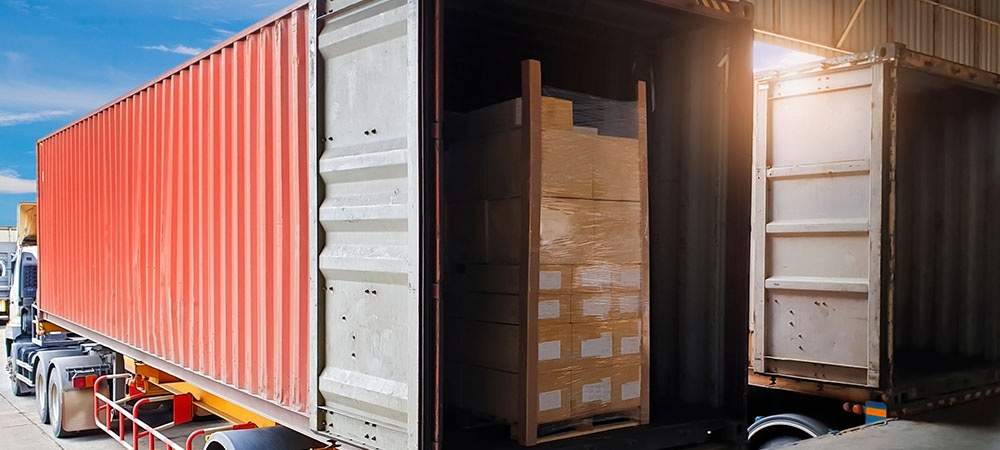Less Than Truckload (LTL) shipping is a cost effective way for companies to send shipments that are not large enough for a Full Truckload (FTL). Being able to ship smaller cargo provides convenience and a lower overall shipping cost compared to an FTL. Here we will look at what affects LTL freight shipping rates in the USA and Canada including tips on how to save money on and protect your shipment.
What is LTL Shipping?
As the name implies, an LTL shipment is one that does not fill a truck to capacity. Instead, smaller shipments are combined with shipping costs being divided among the shipments. This is an invaluable resource for any shipper who needs to ship items that are over 150 lbs but under 15,000 lbs.

Is FTL or LTL Freight Shipping Cheaper?
LTL shipping is cost-effective and convenient compared to other shipping methods. Total shipping costs will be lower for an LTL shipment because it is, by definition, smaller than an FTL shipment. However, you will find the cost per kilogram is higher.
Due to this, LTL shipping should be used only when you do not have enough to ship for an FTL. Additionally, FTL shipping gives you more control over scheduling since yours is the only shipment onboard. LTL shipping can still get your shipments where they need to be but with more stops this can take longer and leave more room for delays.

What Affects LTL Freight Shipping Rates?
LTL freight shipping rates in the USA and Canada are affected by the same factors including weight, density/dimensions, and the distance the shipment is traveling. Here are the other primary factors that affect rates.
Chargeable Weight: Both weight and the dimensions of your shipment affect the rate you pay. In some cases your shipment may be charged based on the actual weight in pounds or kilograms but sometimes “dimensional weight” will be used instead.
With dimensional weight, the length, height, and width are used to calculate the volume of your shipment and then assigned a weight based on the dimensions. For example, each 6000 cubic centimeters could be the equivalent of 1 kilogram. Whichever weight is greater, actual or dimensional, will be used to calculate your chargeable cost.
Dimensional weight tells you the density of your shipment. Items like pillows that weigh very little compared to how much space they take up are less dense than something like a steel block. The denser your shipment is, the less you will pay per kilogram.
Travel Distance: The further your items need to travel the more fuel will be used and more man hours needed to drive the truck. Due to this, greater distances equal greater costs.
Special Handling: Fragile and oversized items typically need extra care when handling and sometimes special equipment as well. If your shipment falls into this category, higher rates will apply. Examples of products that need special handling would be medications, glassware, certain produce and anything else that requires more delicate handling or that cannot be stacked.
Base Rates and Minimums: Minimum and base rates can vary quite a bit depending on the carrier. A minimum rate refers to a rate that a carrier is not able to go lower than while a base rate is based on a carrier’s costs and the current demand for shipping. It is important to pay attention to these rates as it can help you to know when to negotiate.
Extra Services: Certain services such as delivery to a residential location or use of a lift gate will require an extra fee. When negotiating rates, it is best to ask about what services are extra and how much they will be since they might not all be included in the initial estimate.
Current Conditions: Certain conditions such as hazardous weather and demand for shipping can affect rates. The greater demand for shipping, the higher costs are likely to be. For example, shipping near a major holiday can prove more expensive and also require longer shipping times. High fuel costs will also be reflected in the final costs.

Tips for LTL Freight Shipping Rates
Density: To lower your per kilogram rate, you should pack your shipment as densely as possible. For example, items like furniture that can be broken down into pieces should be shipped unassembled. Soft items like clothing and bedding should also be folded and compressed as tightly as possible.
Avoid Special Handling: The more securely you can package your items, the easier they will be for the carrier to handle. Dense items that cannot be easily damaged require the least extra attention and they will be easier and therefore cheaper to handle. Whenever possible, pack your shipment in such a way that it can be stacked with other shipments. If your items cannot be stacked, they will require special handling and possibly extra room which means extra cost.
Partner with an Experienced Carrier: One of the biggest pitfalls of trying to get good rates on a shipment is choosing a carrier based on upfront costs alone. In the worst case scenarios, cheap shippers may not have the right equipment or experience needed to safely transport your items. Damaged items will end up costing more than going with an experienced carrier in the first place. Additionally, lower cost carriers may have more fees that will be tacked on later.

Get a Free Quote on LTL Shipping Rates in the USA and Canada
Many factors go into determining the final cost of your LTL shipment. At RoadLINX, we know what an important decision it is to partner with a carrier who can meet your budget needs as well as your schedule. We offer a free LTL shipping quote for shipping within the United States, in Canada, and crossborder shipping. To request your free LTL shipment estimate fill out our quick shipping rates form.

Leave a Reply